K8s Usage and Waste Algorithm
See the video for an overview:
Data Collected from K8s Clusters and Its Organization in Umbrella
The process of collecting Kubernetes data is made of two main parts: Mapping Data and Cost Data.

The mapping data process is the process of getting basic information from the cloud provider and storing it in the Umbrella database. The information collected includes:
- Static information (settings derived metrics):
- Limits (cpu-limit, memory-limit)
- Requests (cpu-request, memory-request)
- Entities - clusters, nodes, pods, namespaces, node-groups, etc.
- The relationship between them
- Dynamic information that is the actual usage for:
- Nodes and pods
- Multiple metrics (CPU, memory, storage, data transfer, network, etc).
Processing Stage
The processing stage:
- Assigns each of the K8S entities its proportional part of the total K8S costs (combining the data from both Cost and Mapping phase).
- Distributes the costs in a manner that reflects the usage.
The yellow arrows demonstrate the flow of the process, where Umbrella correlates the data between the mapping and cost.
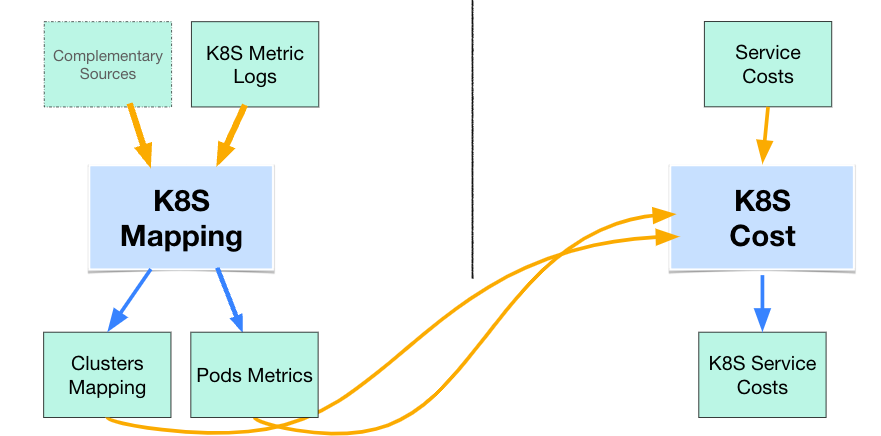
Sources
There are a number of sources used to collect data, as listed in the table below:
| Cloud provider | Source | Used for |
|---|---|---|
| AWS | CloudWatch agent | K8s |
| GCP | BigQuery | Cost Metrics + K8s |
| GCP | GCP Monitoring Client | K8s + Recommendations |
| Azure | Azure log client | K8s |
| AWS, GCP, Azure | Prometheus agent | K8s |
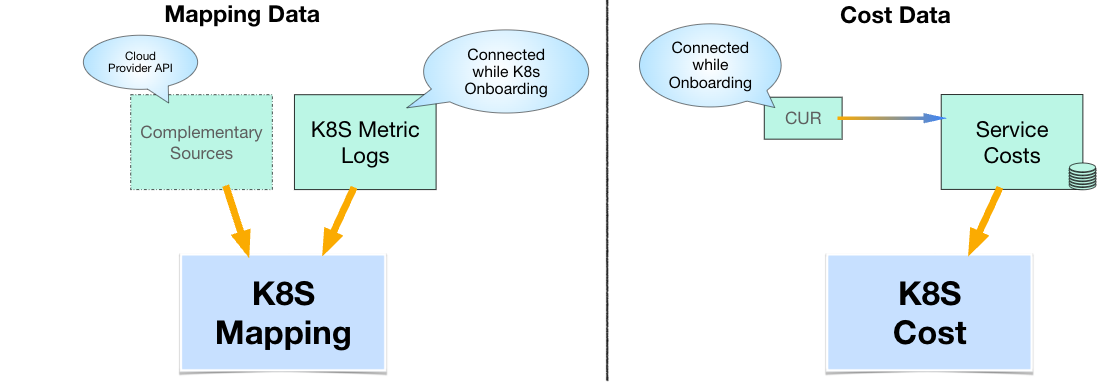
The connection to the Cost Data
The following image illustrates how Umbrella correlates the usage with the cost.
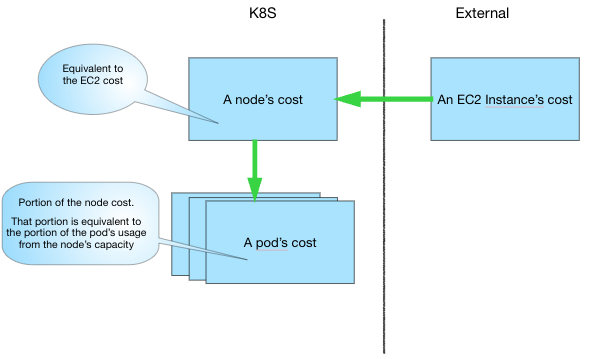
Logic for Waste Calculation
All resources that are not in use (CPU, memory, etc.) are considered to be waste. There is a waste at the pod level (when usage is smaller than requested), and also waste at the node level (when total pods usage is smaller than the node capacity).
By using namespaces, you can organize clusters into virtual sub-clusters - they can be especially helpful when different teams or projects share a Kubernetes cluster. Any number of namespaces are supported within a cluster, each logically separated but with the ability to communicate with each other.
Waste at the node level that is not associated to any namespace is shown on the Kubernetes Cost & Usage Explorer as “not allocated”.
The following three examples show the different waste scenarios.
Example: No waste at the pod level
As the actual usage is higher than requested, there is no waste.

Example: Waste at the pod level
As the actual usage is lower than the requested usage, waste occurs as the pod is underutilized.
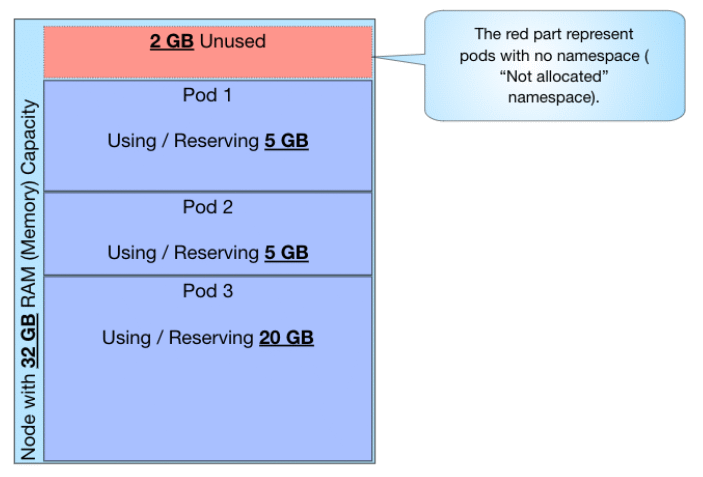
- For pod-level waste, Umbrella applies the calculation for any resource that we have data of request (reservation) setting VS. data of actual usage.
- For node-level waste, Umbrella applies the calculation for any resource what we have data of capacity VS. actual usage data (which can be aggregated from pods).
NoteCurrently, Umbrella only shows Memory and CPU waste on pod and nodes levels. Pod-level waste is still measured as part of the pod usage, therefore the waste-cost is accounted for its namespace.
Using the Allocate Waste Cost option (available in the Kubernetes Explorer, as shown below), you can distribute the node-level unused cost among the pods of each node (with respect to the portion of the pod’s usage in the node). This ensures each cost is associated to an actual namespace (for accounting purposes).
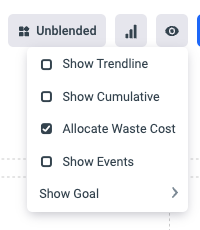
For example:
In the Kubernetes Cost & Usage Explorer, when grouping by namespace It is possible to see:
- Namespaces which are “Not allocated” - highlighted in the Legend below the graph - representing the cost of nodes without a namespace.
- A specific namespace - called “devops” with cost of $597.46.
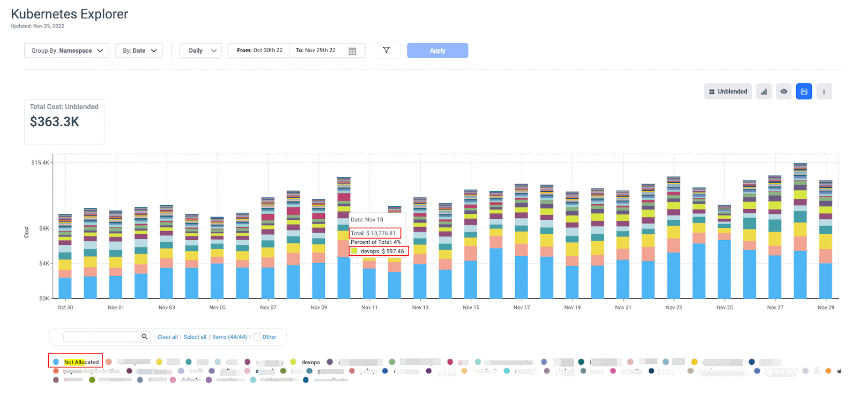
On the next screenshot, we can see that when “Allocate waste cost״ is selected the following occurs:
- “Not allocated” namespaces disappeared and their cost overloaded in a proportional way on existing namespaces.
- The “devops” namespace cost increased to $724, which represents its share for the not allocated based on its proportional cost to the other metrics.
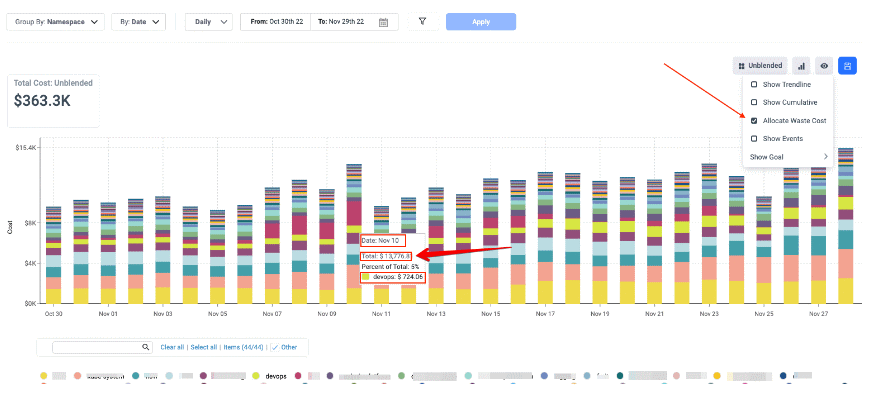
What are Weights used for?
This feature is only relevant for AWS Cloud accounts.
Weights are used to overcome issues where Umbrella might not be able to definitively determine a pod cost. Therefore Umbrella gives the user the choice to assign weights per instance type to show the costs accordingly. If no weights are specified, Umbrella assigns a default ratio of 1:1 between the resources.
The examples below demonstrate how weights can help solve a number of issues.
In AWS, behind each node there’s an EC2 instance, with a fixed price based on its type. This raises a challenge in dividing the cost to pods hosted by this instance.
In a simplified example, where each pod used 25% of the node’s capacity, dividing the cost is easy. The waste in this example is obviously $50.
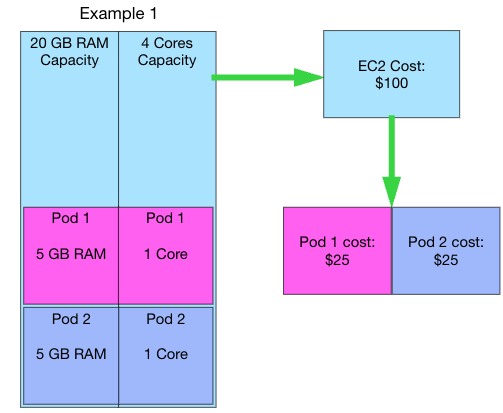
However, in reality, the ratio of pod usage vs. node capacity varies with each resource. Umbrella can bind the cost-worth of each pod to a range, but it cannot provide a definitive cost value for an entire pod individually. There’s no “correct” answer.
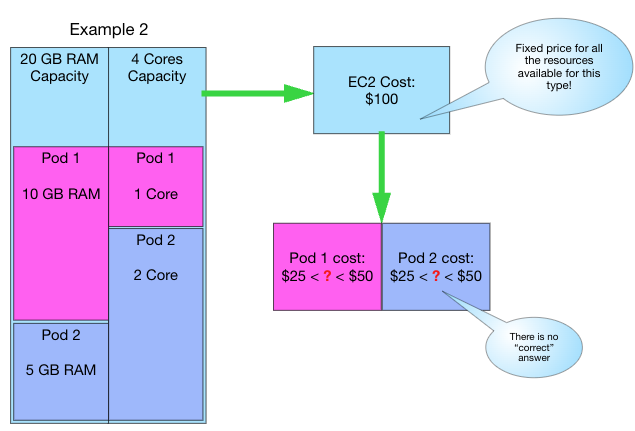
The value of each isolated resource (RAM, CPU, network) is subjective. The only objective value is the total cost for the entire instance.
Therefore, to overcome this, Umbrella gives the user the choice to assign weights per instance type to split the costs accordingly.
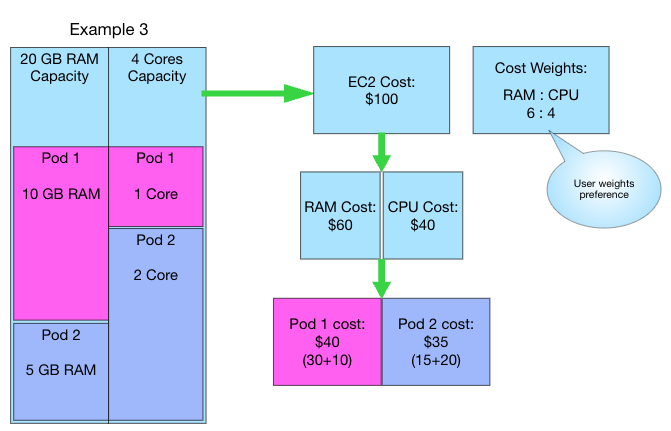
If no weights are specified, Umbrella assigns a default ratio of 1:1 between the resources. The weight options can be found under the Kubernetes > Preferences option, as shown below..
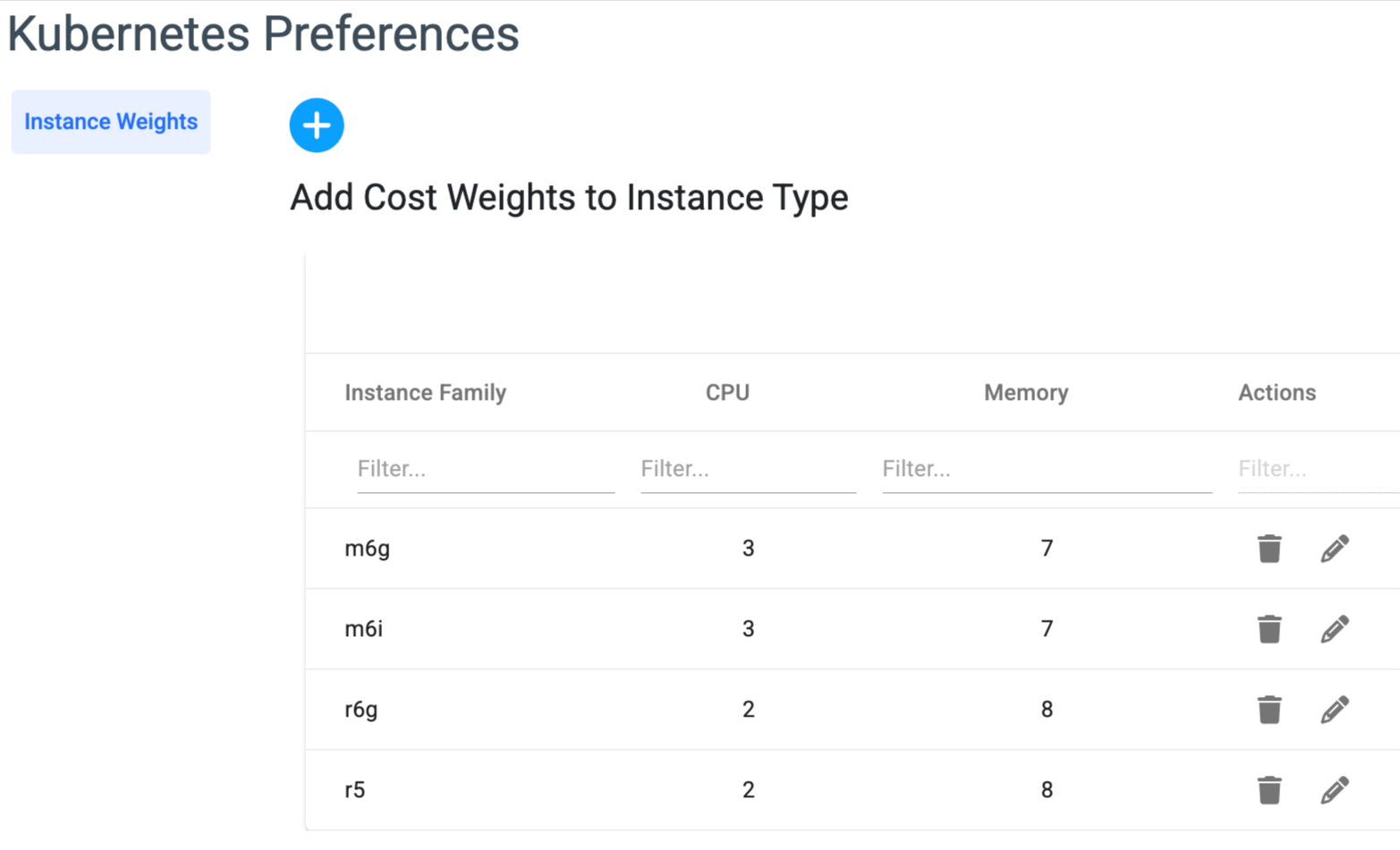
Updated about 2 months ago
